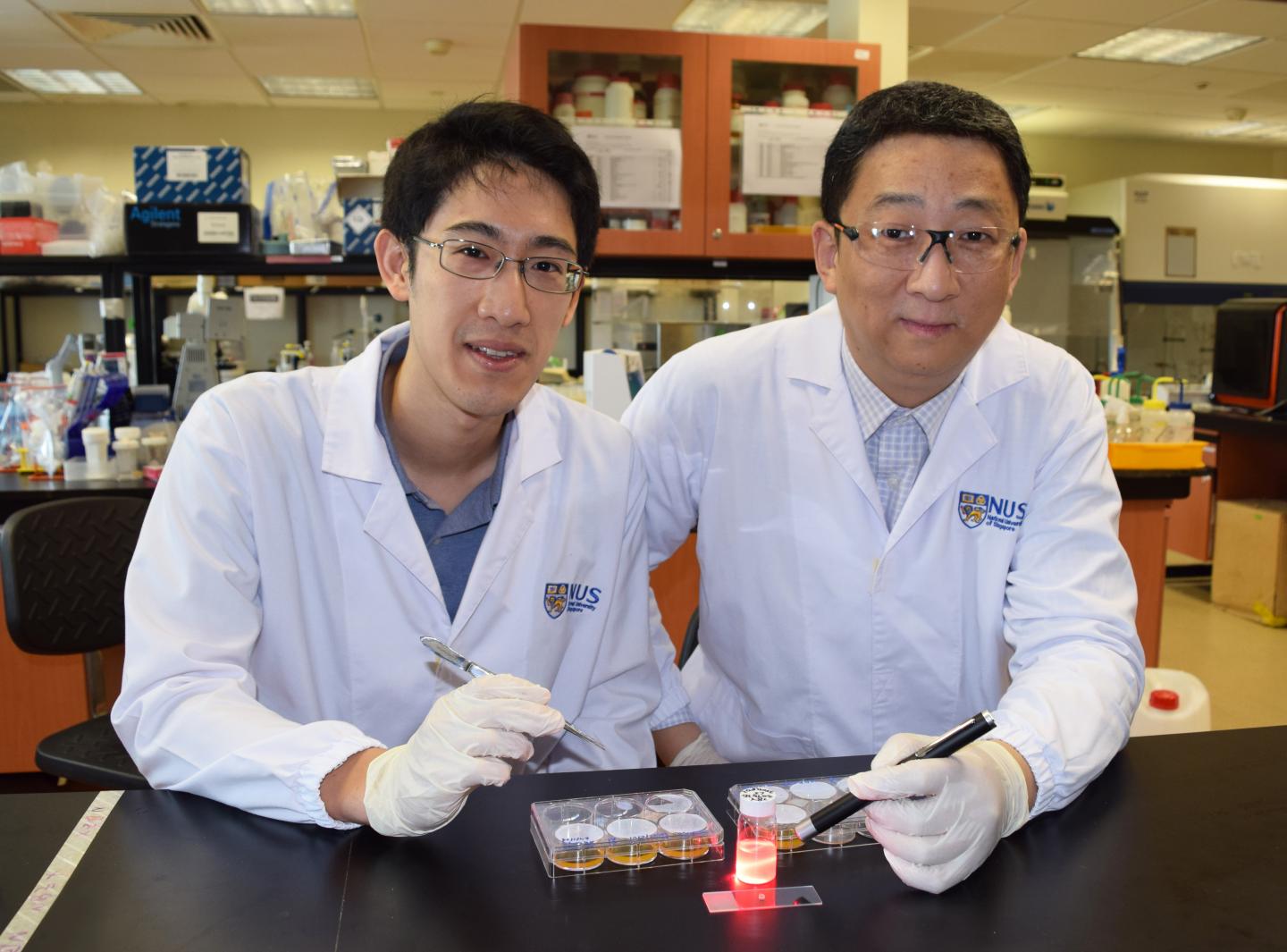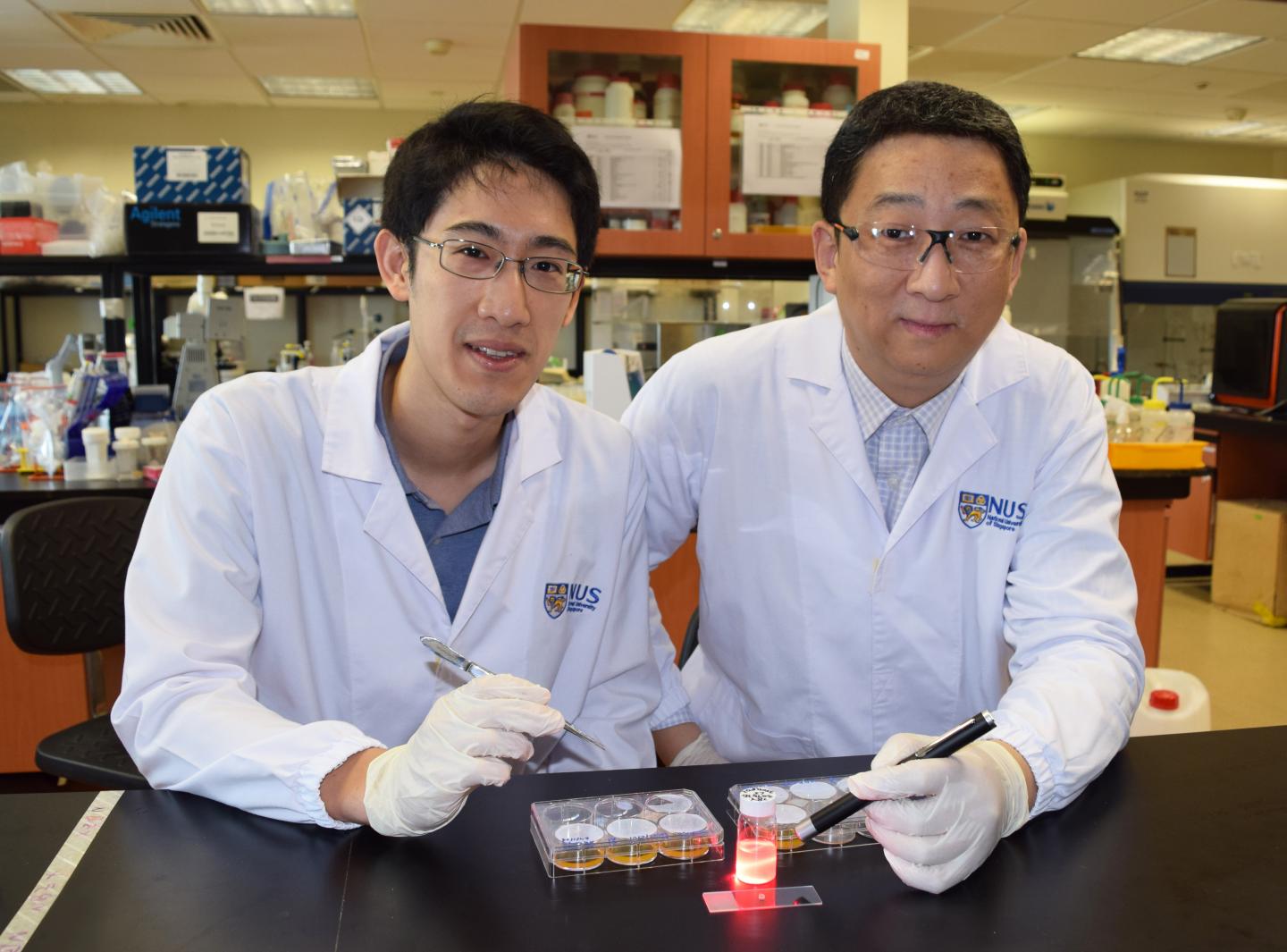
Credit: National University of Singapore
A team of scientists from the National University of Singapore (NUS) has developed a way to wirelessly deliver light into deep regions of the body to activate light-sensitive drugs for photodynamic therapy (PDT).
While PDT is a powerful light-induced cancer treatment, it is often limited to surface cancers due to the low penetration of light through biological tissue. This wireless approach of light delivery enables PDT to be used on the inner organs of the body with fine control. This technology could potentially enable PDT to be used to treat a wider range of cancers, such as brain and liver cancer.
The study was led by Professor Zhang Yong and Assistant Professor John Ho, who are respectively from the Department of Biomedical Engineering and Department of Electrical and Computer Engineering at NUS Faculty of Engineering. The findings of the study were published in the scientific journal Proceedings of the National Academy of Sciences (PNAS) on 29 January 2018.
Asst Prof Ho said, "Our approach of light delivery will provide significant advantages for treating cancers with PDT in previously inaccessible regions. Powered wirelessly, the tiny implantable device delivers doses of light over long time scales in a programmable and repeatable manner. This could potentially enable the therapies to be tailored by the clinician during the course of treatment." Asst Prof Ho is also a Principal Investigator at the Biomedical Institute for Global Health Research and Technology (BIGHEART) at NUS.
Understanding photodynamic therapy
PDT is a treatment method that uses a light sensitive drug, called a photosensitiser, that is triggered by a specific wavelength of light, to produce a form of oxygen that kills nearby cells. This provides a precision approach to cancer therapy that overcomes many of the whole-body side effects of classical drugs such as chemotherapy. In addition to directly killing cancer cells, PDT shrinks or destroys tumours by damaging blood vessels in the tumour, preventing the cancer cells from receiving necessary nutrients. PDT may also activate the immune system to attack the tumour cells.
However, PDT has so far been limited to the treatment of surface cancers. Traditional light sources such as light-emitting diodes (LEDs) or lasers may be used for surface tumours, such as skin cancer, but the low penetration of light through tissue limits the depth to less than a centimetre. For the inner lining of some organs, such as the oesophagus, an endoscope – a thin, lighted tube used to look at tissues inside the body – can be used to insert a fibre optic cable, but other regions cannot be easily accessed by this way. For organs such as the brain or liver, the organ must be exposed by surgery before PDT can be used.
Wireless light switch
The NUS team's novel approach of enabling PDT to be used for the inner organs of the body is achieved by inserting a tiny wireless device at the target site, extending the spatial and temporal precision of PDT deep within the body.
The miniaturised device, which weighs 30 mg and is 15 mm3 in size, can be easily implanted, and uses a wireless powering system for light delivery. Once the device has been implanted at the target site, a specialised radio-frequency system wirelessly powers the device and monitors the light-dosing rate.
The team demonstrated the therapeutic efficacy of this approach by activating photosensitisers through thick tissues – more than three centimetres – inaccessible by direct illumination, and by delivering multiple controlled doses of light to suppress tumour growth.
"This novel approach enables ongoing treatment to prevent reoccurrence of a cancer, without additional surgery. The application of the technology can also be extended to many other light-based therapies, such as photothermal therapy, that face the common problem of limited penetration depth. We hope to bring these capabilities from bench to beside to provide new opportunities to shine light on human diseases," said Prof Zhang.
The team is now working on developing nanosystems for targeted delivery of photosensitisers. They are also coming up with minimally invasive techniques for implanting the wireless devices at the target site, and looking into integrating sensors to the device to monitor the treatment response in real-time.
###
This study was supported by the Singapore Ministry of Education's Tier 3 grant.
Media Contact
Amal Naquiah
[email protected]
65-651-65125
@NUSingapore
http://www.nus.edu.sg/
Related Journal Article
http://dx.doi.org/10.1073/pnas.1717552115





